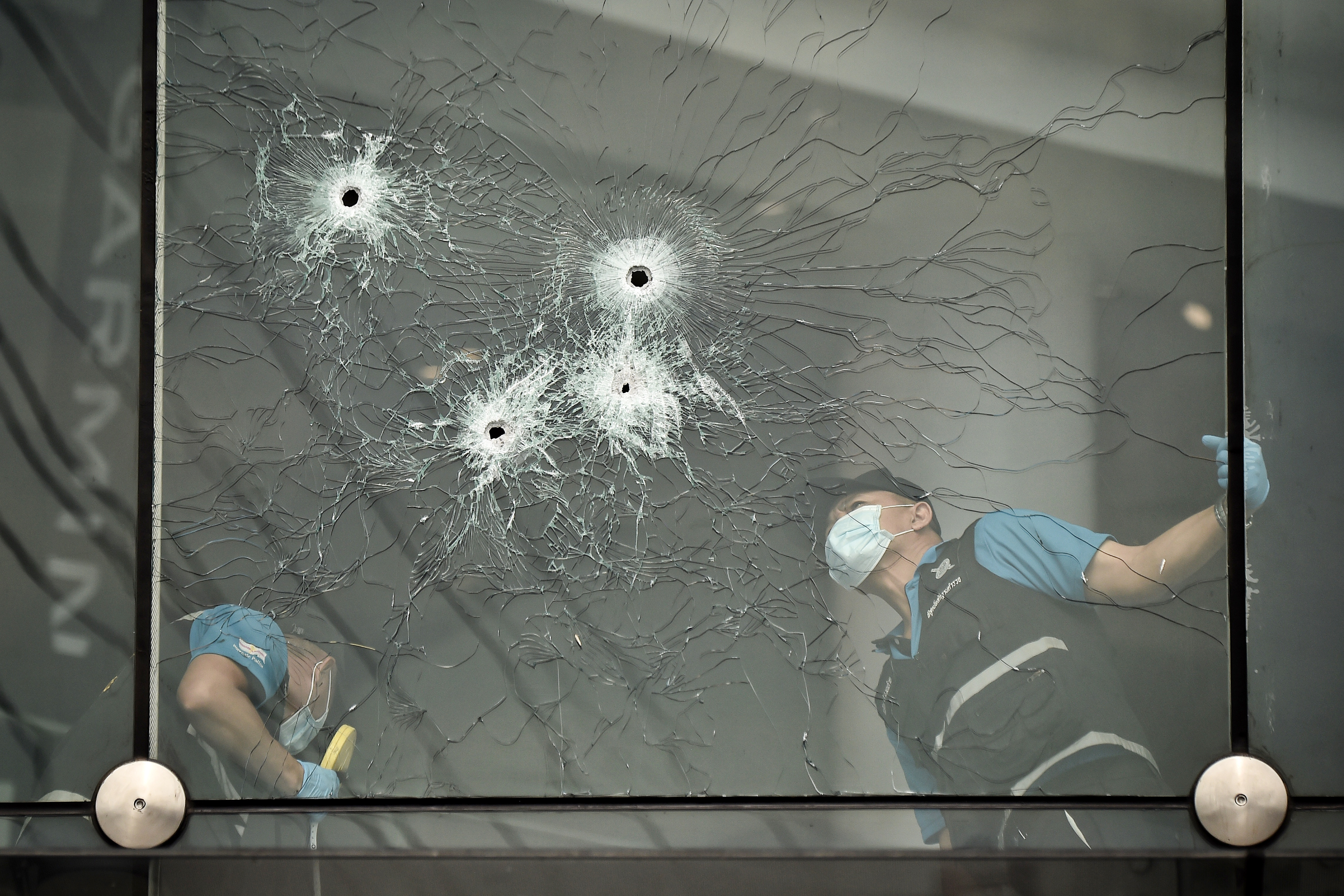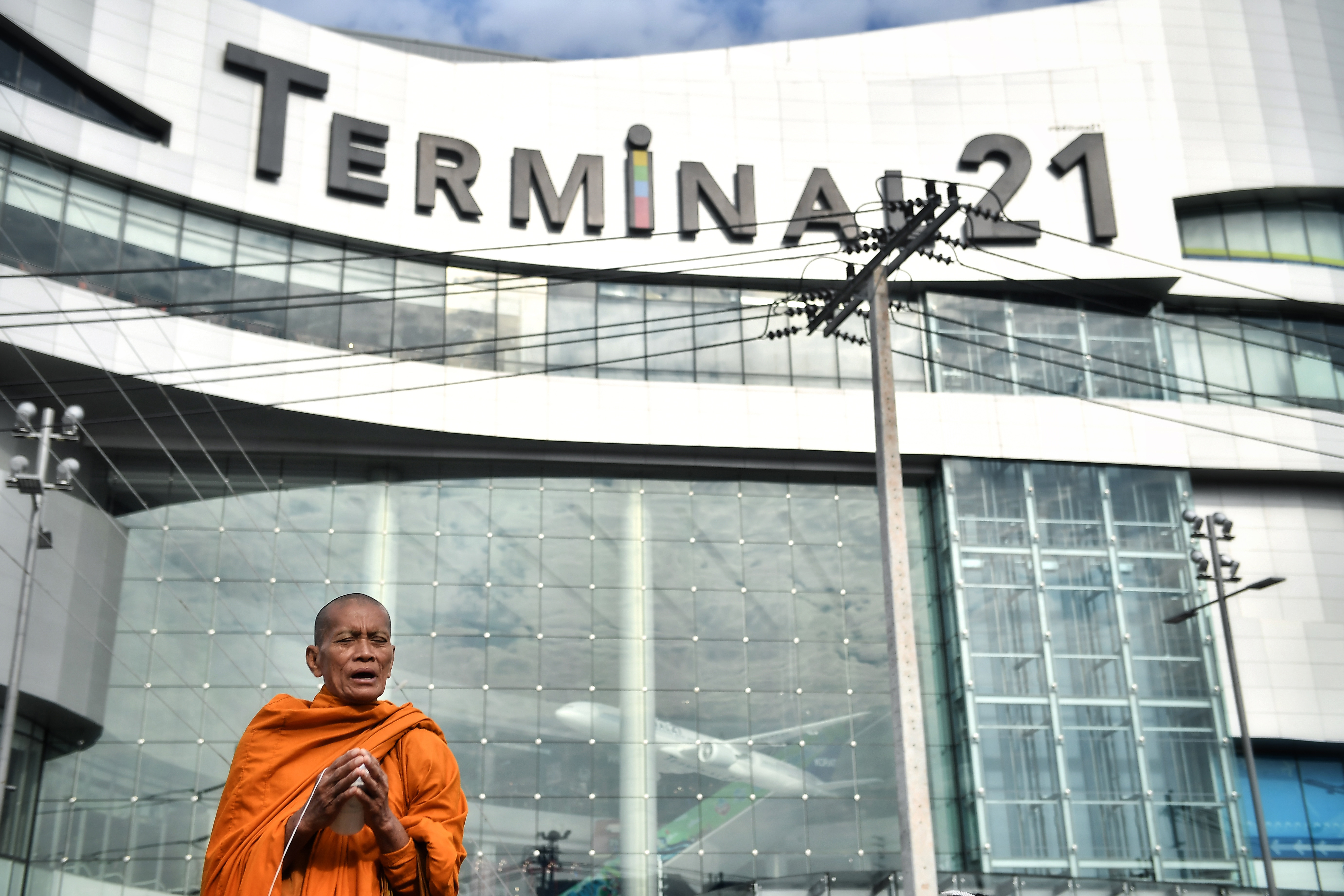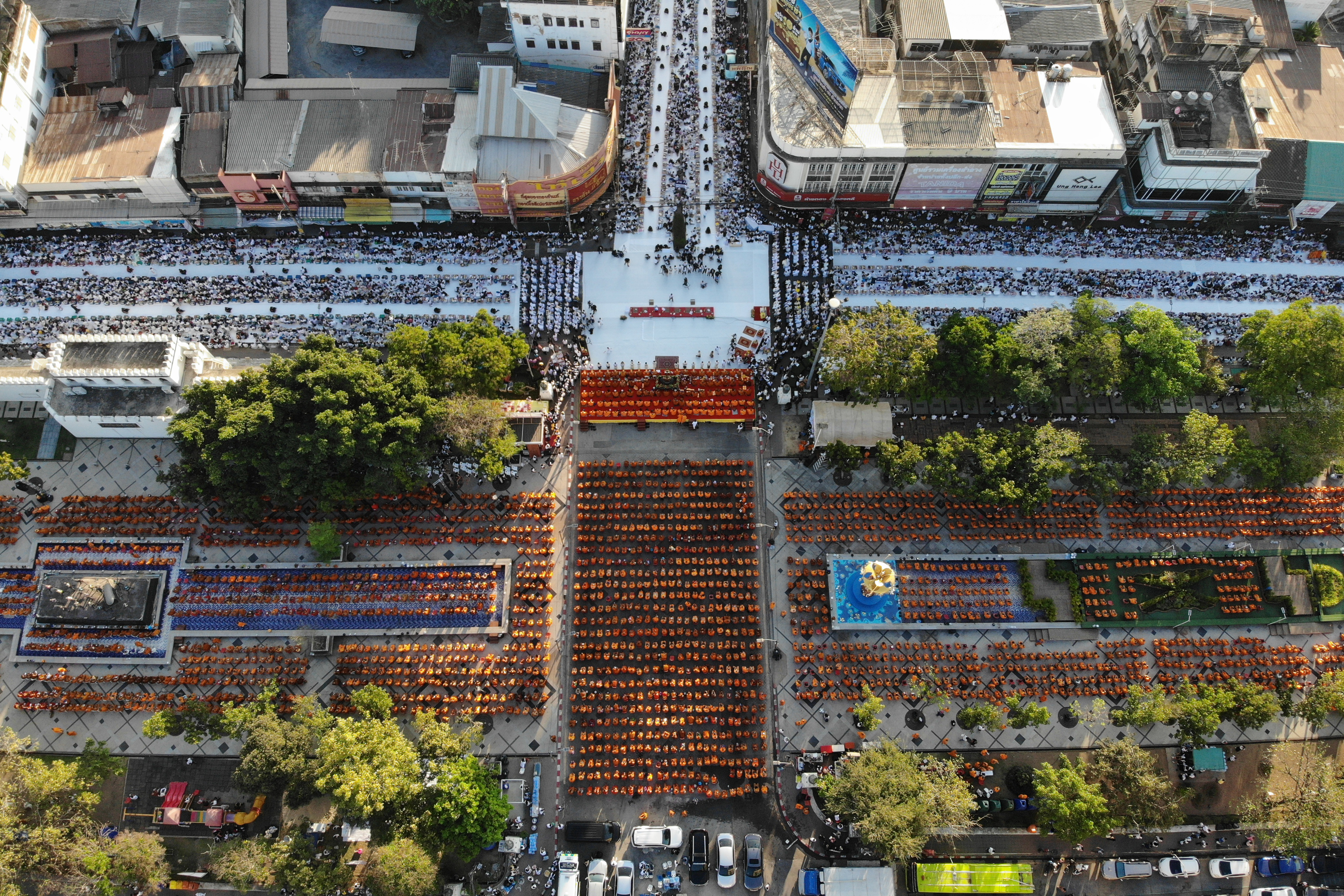Victims of Mass Shooting in Thailand Reflect As Anniversary Nears
January 29, 2021It took a few moments before he understood that a bullet had just ripped through his left arm. Seconds before, Jirattikarn Nobthai was sprinting to the aid of a stranger who had been gunned down right in front of him just outside the entrance of a busy Thai shopping mall. He then saw a man dressed in tactical military gear, holding an assault rifle, shooting people indiscriminately.
“When the shots went off, people just stopped, they were stunned,” Jirattikarn, a 27-year-old car mechanic, told VICE World News in a recent interview. “I saw someone laying on the ground, but still breathing. When I saw the person go into convulsions I decided to run in and help him. I was so close to grabbing him. It felt like my fingertips were touching his hand—then I got hit.”
Bleeding, he crawled to take cover against a nearby pillar, tore open his shirt to check his body for other wounds, and focused on his breathing until the paramedics arrived.
Thailand is no stranger to gun violence, but the slaughter on Feb. 8 last year in the northeastern city of Korat was the first of its kind, drawing parallels with the devastating problem of mass shootings in the United States.
The killer, Jakrapanth Thomma, was a 32-year-old sergeant and marksman in the Thai army. He first killed his commanding officer after he felt he had been cheated on a land deal. Then, he took his anger out on the mid-sized city, going on a live-streamed rampage in the streets, at a temple and in the Terminal 21 mall that resulted in the deaths of 30 people. The victims included 23 civilians, three police officers, and three military personnel. Two of the slain police officers were from an elite swat team assigned to take down the lone gunman, but were killed during the assault inside the mall.

Fifty-seven people were also wounded, some severely. After paramedics attended to Jirattikarn, it was clear he had been hit multiple times, once in his left arm, another in his lower abdomen. The bullets ripped through critical tissue and caused severe nerve damage throughout his body. Today, he struggles to walk, and has only recently gained some use of his left arm and hand. His digestive system is also severely impaired, and he uses a colonoscopy bag to help his body process food.
He still undergoes strenuous physical therapy four times a week. But the grueling routine hasn’t broken his spirits, he explained. Jirattikarn feels hopeful that he will make a full recovery, and believes that Korat has only become stronger since the tragedy.
“It’s getting better, a lot better,” he said. “I’m finally able to do more everyday activities. My left hand is still weak, but I can squeeze a little. And although I can’t run, I can walk much faster now,” he said.
Thinking back on that day, he remembers how precise the shooter was. He later learned that the trained marksman meticulously went from floor to floor searching for people he found hiding in the mall.
Before starting his rampage, Thomma raided a weapons bunker at a nearby military base before moving to the shopping center. He posted live videos of himself onto Facebook before his account was removed. The massacre carried on through the night before being brought to its own violent end when the swat team cornered and killed Thomma at the mall.
A city scarred
Until the shooting, Korat was known for its rural national parks and scattered ancient temples. But the Feb. 8 killings are now permanently seared into the minds of residents. Everyone knows where they were that day.
“I was sitting at the reception when I saw people running by the front of the office,” says Mattaneeya “Anny” Pummipat, 37, recalling the events from inside Terminal 21, one of Thailand’s largest mall chains.
“Their faces were nervous, shocked. They were running away from something, some guy, maybe running from death. My manager ran out from the reception area to see what was happening. She could hear the sounds of a gun going ‘pam! pam! pam!”

Anny is the owner of an English language school located inside the Terminal 21 shopping center. At the time of the shooting, eight children from the ages of four to nine were taking classes, their parents nearby. When the staff realized that they were in danger, they quickly locked the front doors, switched off the lights, and moved everyone to a room at the far back of the center hoping that they would remain hidden.
“My manager ran out from the reception area to see what was happening. She could hear the sounds of a gun going ‘pam! pam! pam!”
Refusing to panic, the staff continued with their teaching activities and calmly played games with the children to keep their minds off the gravity of the situation. All over the mall, people were hiding in closets, bathrooms and storerooms as the gunman stalked the floors looking for victims.
“It was a big challenge for us, because we could not tell the children about the situation outside,” Anny recalled. “So we played different ‘adventure’ subjects and activities with the kids. We told them that we had to go into the ‘secret room’ where we would sleep and where our teachers could do magic.”
Miraculously, they went unnoticed by the shooter. The group of parents, children, and staff made it out of the mall to safety. Although Anny said that the city was quick to bounce back from that dark day, she thinks it will take time to overcome the psychological trauma brought on from the massacre. She added that loud sounds remain triggers that “connects us back to that situation.”
“When we talk about the Terminal shooting, everyone remembers,” she said. “Everyone remembers which day, what time it happened, and how many people were lost. Everyone has memories about this. Even though we are moving on, we still remember that day,” she said.
“Even now, one year later, I still live with that.”
Psychological impact
Experts who study trauma brought on by violence agree that it will take more time for victims to fully recover.
“Normally [with this kind of trauma,] it takes ten or 20 sessions, but last year, we only had one night,” says professor Bussakorn Binson, dean of the faculty of fine and applied arts at Bangkok’s Chulalongkorn University. Immediately following the shooting, Binson and a team of psychologists traveled to Korat to host art therapy sessions. The team used a variety of different nonverbal techniques, including music and drawing, to try to “release trauma.”
“Often trauma appears in their drawings, and sometimes not only trauma from the shooting would show,” she said. “We found out that many of them were still shocked.”

She added that it’s been difficult to follow up with victims given the COVID-19 situation, and that the pandemic has kept her team from being able to return to Korat to host follow up therapy sessions. However, she’s kept in touch with a small group of victims remotely, and they’ve told her that they are improving mentally. But she believes it will still take a while.
“Normally [with this kind of trauma,] it takes ten or 20 sessions, but last year, we only had one night.”
For Jirattikarn, he has mental and physical scars, daily reminders of that day. But he doesn't want to dwell on the past. He says he is more worried about his mother, who has shouldered the burden of care mostly alone. She has had to work longer hours at her job as a primary school teacher to help pay for his expensive treatment and physical therapy. She also has to provide for his younger brother.
When Jirattikarn first woke up after being treated at the hospital and realizing the severity of his wounds, he was scared and felt hopeless.
“But my mom pushed me through and did not show any sign of weakness for me and so that made me stronger,” he said. “My mom is my inspiration and driving force for me.”
He said that once he can work again, he’ll save up enough money to surprise his mother with a trip to Europe because she’s always wanted to go. As the anniversary of the event nears, he now considers himself lucky to be alive at all.
“It’s given me a new outlook on life. Now, whatever I want to do, I’ll just do it. Because I know that in life, there’s actually not that much time.”
